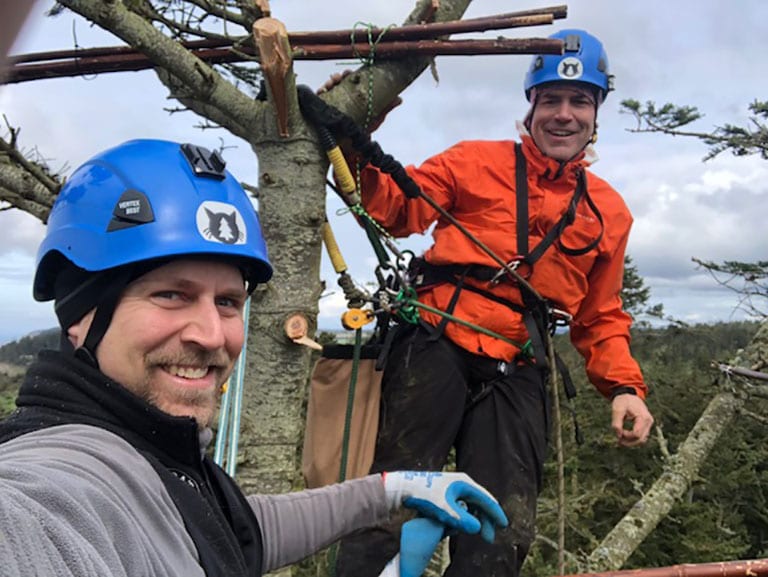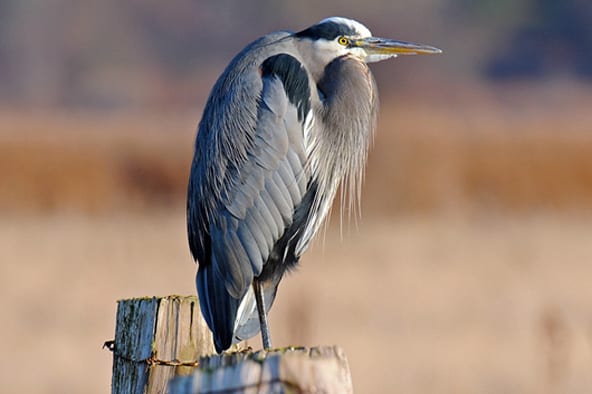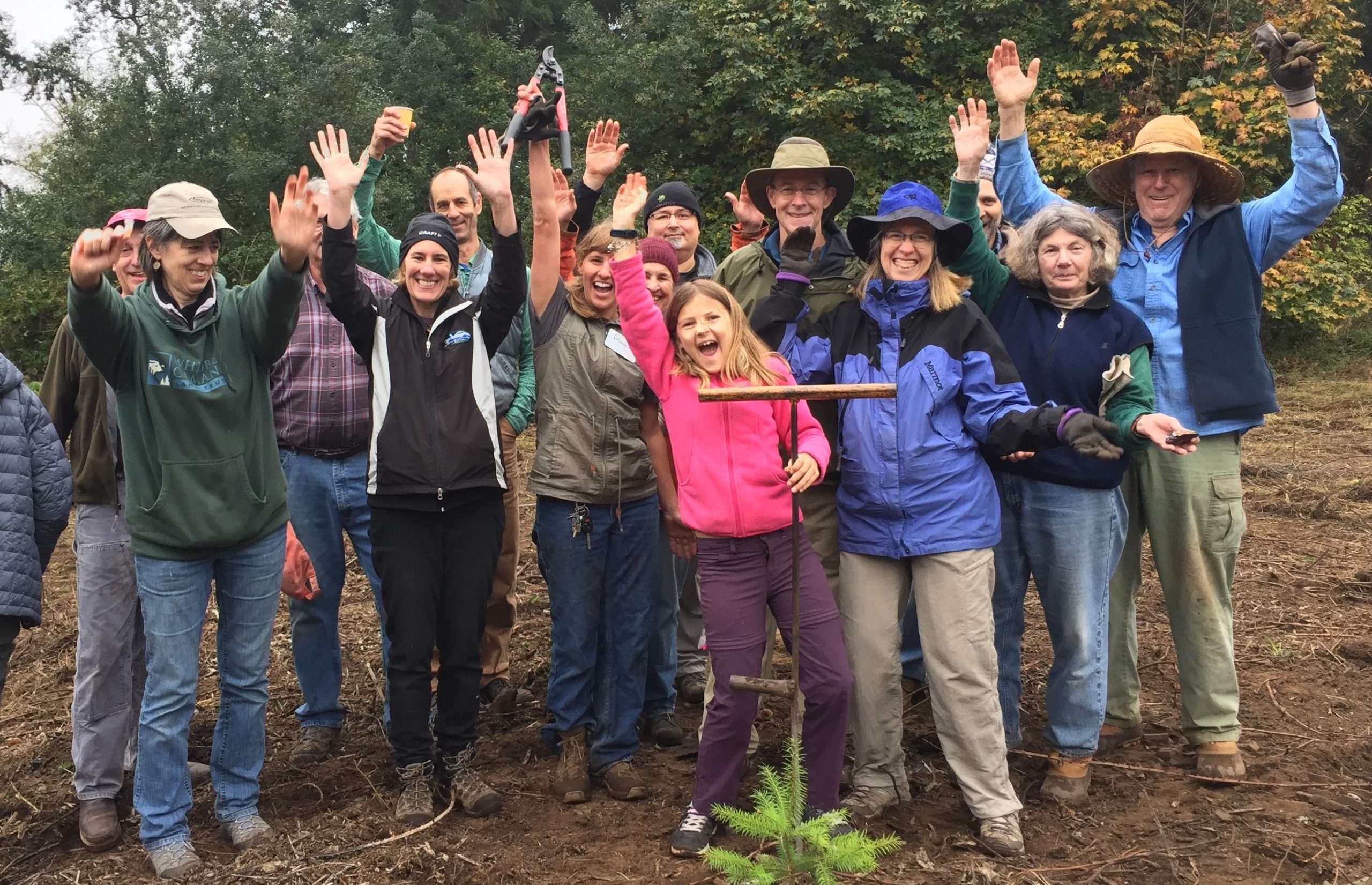If You Build an Osprey Nest, Will They Come?

Shaun Sears and Tom Otto of Canopy Conservation LLC build an Osprey nest at Admiralty Inlet Natural Area Preserve near Coupeville in April 2018.
Nest foundation built to attract birds to Central Whidbey
Bonnie Thie eagerly awaits the day when she sees an Osprey poking its white head out of a nest high above the Whidbey Camano Land Trust’s Admiralty Inlet Natural Area Preserve located just north of Fort Casey State Park off of Engle Road.

An Osprey nest is constructed by two arborists from Canopy Conservation LLC at Admiralty Inlet Natural Area Preserve near Coupeville in April 2018.
Thie’s anticipation started building after two arborists with Canopy Conservation LLC scaled a tall grand fir tree in mid-April and used a unique method to construct the foundation of a nest for Ospreys, a fish-eating bird of prey. Thie and her husband Randy Cowart funded the project on land that Bonnie and her sisters Krista Thie Hoyt and Carol Thie donated to the Land Trust in 2016 to expand the Admiralty Inlet Preserve.
That land is dear to Thie and her family. She calls it “Larry’s Acres,” after her late father Lawrence Thie, who loved to work on the property during his retirement years, clearing brush and planting trees. Her mother, Mary Louise Thie, who died in 2016, really enjoyed nature and was fond of birds, especially Ospreys. That’s what got Thie thinking about a way to make the wooded property more attractive to Ospreys as a potential nesting site.
“My mother always loved seeing the Ospreys whenever we would drive through South Whidbey,” Thie recalled. “She would look for them nesting. It just occurred to me that it would be pretty cool to have Ospreys nest on Larry’s Acres in honor of my mother.”
She contacted Jim Kaiser of Osprey Solutions LLC and hired him to lead the Osprey nest habitat enhancement project at the Land Trust’s Admiralty Inlet Preserve. Kaiser is an expert on Osprey nesting behavior and nest management issues.
Throughout his career, Kaiser has been called on by government, utility companies, private companies, and schools for assistance to prevent, cope with, or relocate problem Osprey nests. A common remedy in urban settings is to build a pole platform. Previously, the best technique in a natural forest was to girdle or top a tree.
A few years ago, Kaiser introduced a new method, which doesn’t kill a tree or detract from its natural surroundings and is less costly to construct. It involves pruning branches near the tree’s top and using those branches, interwoven with long bamboo poles, to build a sturdy foundation to serve as a “starter” nest for an Osprey pair to customize and complete.

Bonnie Thie watches the construction of an Osprey nest at Admiralty Inlet Natural Area Preserve near Coupeville in April 2018.
This method was employed at Admiralty Inlet Preserve atop a 125-foot grand fir that arborist Shaun Sears estimated to be roughly 100 years old.
“The Osprey is the one bird that prefers to nest at the top of the tallest tree,” Kaiser explained. Eagles and hawks tend to nest about a third of the way down in a tree’s canopy. This new Osprey nest habitat enhancement technique is good for the tree because it reduces the weight of the branches in the crown, which are susceptible to breaking in high winds. And, by thinning the tree, we open up the tree crown so that Ospreys can access the top of the tree.”
Osprey populations have been rebounding in the Pacific Northwest since a drastic decline occurred in the mid-1970’s due to pesticide use. Kaiser estimates that about a dozen Ospreys return to their breeding grounds on South Whidbey in early April to raise their young.
Although Ospreys are occasionally sighted at nearby Crockett Lake, right now the closest occupied Osprey nest is located five miles away to the southeast, though Osprey have attempted to establish a nest just two miles southeast of the lake on a power pole off of Race Road in recent years. You can view Osprey nests built on top of cell towers located along State Highway 525 and at a recently erected nesting platform at the South Whidbey High School ballfield.
Kaiser predicts it could be a year or two before Ospreys start colonizing near Coupeville and settle into their new nest. Ospreys tend to be more tolerant of human activities than other birds of prey and will build nests on structures near water with an abundance of fish.
Thie will be watching for activity at the new nest site.
“Every time we go by, we take a look,” she said. “We’re hoping to see Ospreys nesting within the next two years. It would be fabulous, of course, if it happens this year.”










